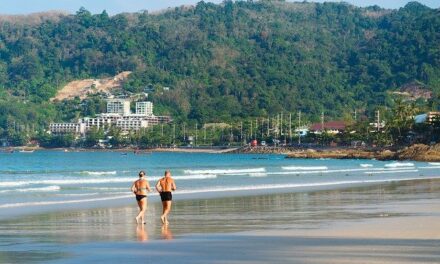In recent years, we’ve seen a rise in online entrepreneurs and remote workers, and COVID has only served to accelerate this trend. More than ever, we are able to realize our dreams of living abroad, working beachside, and exploring new cultures without missing a beat in our careers. And Costa Rica, with its myriad of fun activities and tourist friendly vibes, is a prime destination for achieving that perfect balance of work and play.
Capitalizing on this trend, Costa Rica is launching a Digital Nomad Visa, which will grant year-long stays rather than the typical 90 days tourist visa, along with other conveniences like local banking, tax exemption on import of equipment, etc. This move further affirms Costa Rica as the place to be.
If you’re looking to join the legions that have made this move, here are some practical tips to help you make the most out of it:
Accommodation
To get the best bang for the buck, my suggestion is to stay in place for one month (or more) at a time, thus taking advantage of monthly rental rates. This also allows you to ease into a routine and attune to the day-to-day and rhythm of a place.
There are a few effective ways to find short-term rentals:
– Facebook: There are plenty of Costa Rica centric groups on FB. The best groups for rentals are the region specific and rental specific ones. A quick search will render many results. You can post what you’re looking for or sift through the posts by landlords. These groups are also great resources for help on anything related to your stay in Costa Rica (ie. where to buy something, where to go, etc), expats and Ticos are usually very willing to help. Another option is through FB marketplace, which also has rental listings.
– Word of Mouth: Once you arrive to a spot and get talking to expats or locals, you can also ask around. I’ve received many contacts of local landlords through this method.
Whether through FB or word of mouth, I’d recommend scoping out the place in person before agreeing to any prolonged rental term. Most short term rentals include utilities and all, but some do not. Please make sure to confirm.
– Airbnb: Airbnb rentals are typically more expensive than the above mentioned options. But having the comfort of reviews and the backing of Airbnb reduces risk, which is worth the additional cost for me. Also, if you’re renting for a month or more, you’re eligible for their monthly rate, which often can be further negotiated down.
Internet
Internet is hit or miss in Costa Rica. Although most rentals or hotels offer adequate bandwidth for personal functions like email or social media, video calls can get dicey. If Zoom meetings are part of your work life, then the tip here is to inquire on their internet speed and availability of fiber connectivity prior to booking. If you’re able to check out the place in person, then download a speed test app and test it while you’re there.
Getting around
Renting a car in Costa Rica is expensive. It might be worth it if you’re traveling as a group and can split the cost, but if you’re not driving on most days, then it’s a high expense to carry. Uber is great if available, which is the case in larger cities and towns. Otherwise, without a car and without easy public transportations, I tend to stay in more central and walkable areas of town and only rent a car when needed for an outing. I also ask around for local driver contacts that I can call on when needed.
When I’m relocating towns, I look at these options:
– Local bus: This is by far the most economical way to travel, but also the slowest. Figuring out the schedule and routes is a science in itself. It’s great when there’s a direct routes, but it gets more tricky when dealing with multiple or tight transfers. If you have the time and are up for an adventure, this is a fun way to travel while getting a dose of local life. Websites to check schedules/routes:
https://thebusschedule.com/EN/cr/index.php
https://www.visitcostarica.com/en/costa-rica/bus-itinerary
– Shuttles: There are many private or group shuttle services that offer door-to-door pick ups and drop offs. Group shuttle offer a great balance between cost and convenience, but depending on the time of the year, group shuttles for less popular routes might not be available. Private shuttles are obviously more expensive.
– Domestic Flights: Costa Rica has a few domestic airlines that offer short flights across many cities and even coast towns within Costa Rica. Depending on the route, this option can be more cost effective than private shuttles.
Food
Any non-local cuisine restaurant will be expensive, on par with North American prices and sometimes even more so. The best bet for good and economical food is sodas, the Costa Rican traditional restaurant, with casados and ceviches being my fave dishes.
For cooking at home, many local super markets (supermercados) have a decent spread to indulge all your cooking endeavours. If you’re missing North American products, you can make a stop at AutoMercado which is another grocery chain, but imported products will cost you. But ultimately, my preference are the weekend markets. Most towns have weekly farmer’s market, where you can find the incredibly fresh produce and ingredients.
All in all, Costa Rica is a haven for digital nomads who are looking to experience the purity of nature and good vibes. There are some inconveniences to navigate, as is the case with any foreign country, but the reward of breathtaking sunsets and the juiciest fruits ever will more than make up for it.










